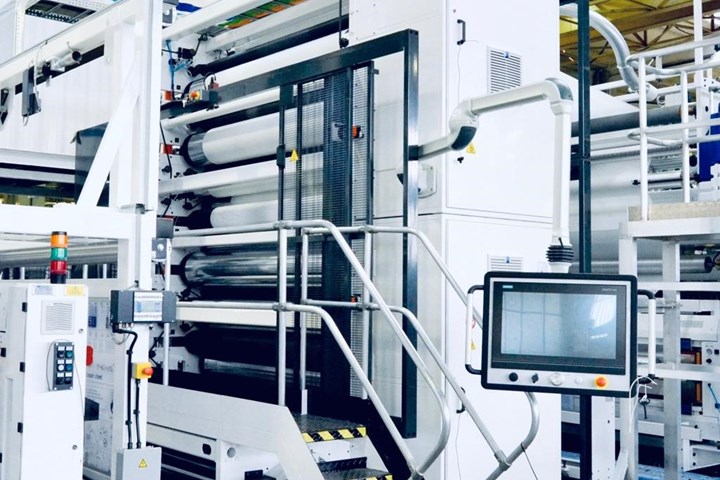Updated Machine-Direction Orientators
Film MDOs are enhanced to improve efficiency and reliability while cutting on energy consumption.
Colines of Italy (U.S. office Hauppauge, N.Y.) has made a number of enhancements to its machine-direction orientation equipment in an effort to make them more accurate and efficient. Notably:
- The patented heating system with infrared ray heaters inside the rollers allows the orientation without any temperature dissipation, which is the most common fault of standard cylinders.
- The IR heating system minimizes the energy consumption as well.
- Sensors detect the temperature directly on rollers’ surfaces for a more accurate reading of the data.
- Every roller is divided in at least three transversal zones for temperature control to ensure a perfect uniformity of the surface temperature.
- The operating temperature is reached much faster than in oil or water systems, which means a dramatic reduction of scrap during line startup.
- The infrared eliminates the risk of potential oil and water leakage, which represents an enormous advantage in terms of environmental sustainability as well as in terms of safety. This system is fully risk-free for potential fires.
- The independent adjustment of the cylinders’ position, speed and temperature significantly reduce the “neck-in.”

Related Content
-
Medical Tubing: Use Simulation to Troubleshoot, Optimize Processing & Dies
Extrusion simulations can be useful in anticipating issues and running “what-if” scenarios to size extruders and design dies for extrusion projects. It should be used at early stages of any project to avoid trial and error and remaking tooling.
-
Roll Cooling: Understand the Three Heat-Transfer Processes
Designing cooling rolls is complex, tedious and requires a lot of inputs. Getting it wrong may have a dramatic impact on productivity.
-
What to Know About Your Materials When Choosing a Feeder
Feeder performance is crucial to operating extrusion and compounding lines. And consistent, reliable feeding depends in large part on selecting a feeder compatible with the materials and additives you intend to process. Follow these tips to analyze your feeder requirements.















